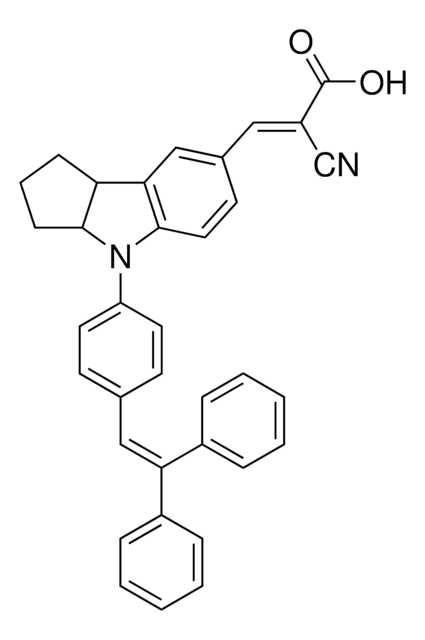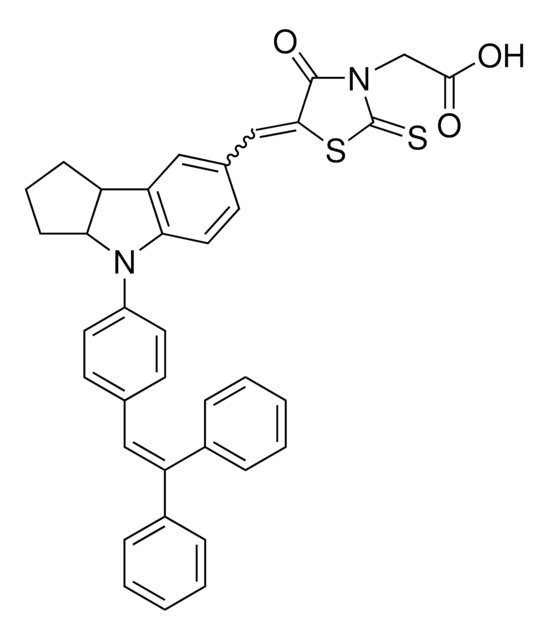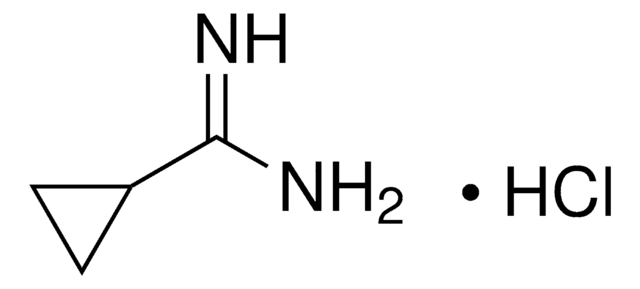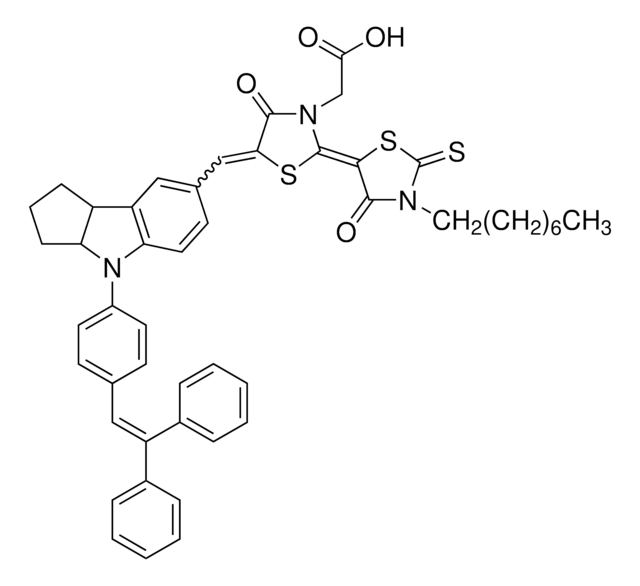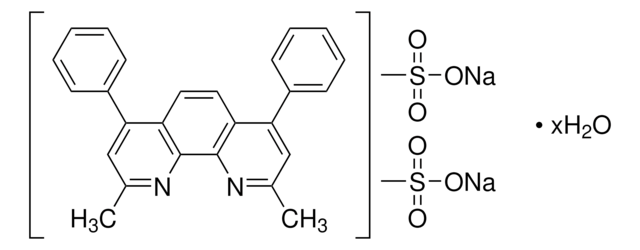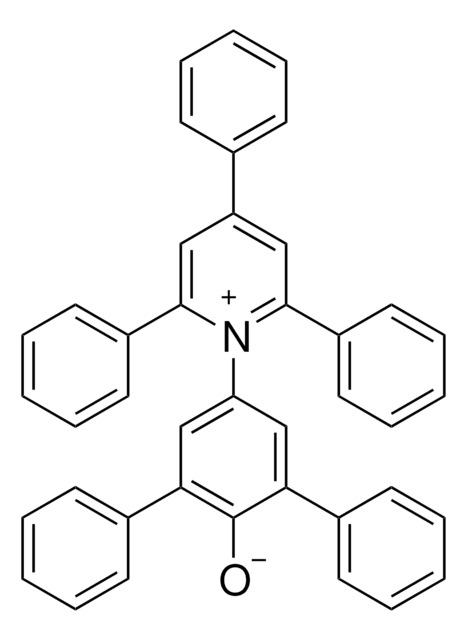736015
2-((E)-5-(1,2,3,3a,4,8b-Hexahydro-4-(4-(2,2-diphenylvinyl)-phenyl)-cyclopenta[b]indol-7-yl)-methyl)-3-ethyl-5-(3-carboxymethyl-4-oxo-thazolidin-2-yliden)-rhodanin
98% (HPLC)
Synonym(e):
5-[[4-[4-(2,2-Diphenylethenyl)phenyl]-1,2,3-3a,4,8b-hexahydrocyclopent[b]indol-7-yl]methylene]-2-(3-ethyl-4-oxo-2-thioxo-5-thiazolidinylidene)-4-oxo-3-thiazolidineacetic acid, Indoline dye D149, Purple Dye
About This Item
Empfohlene Produkte
Assay
98% (HPLC)
Form
solid
mp (Schmelzpunkt)
284-289 °C
λmax
531 nm
SMILES String
CCN1C(=S)SC(\C1=O)=C2\SC(=C/c3ccc4N(C5CCCC5c4c3)c6ccc(cc6)\C=C(\c7ccccc7)c8ccccc8)\C(=O)N2CC(O)=O
InChI
1S/C42H35N3O4S3/c1-2-43-40(49)38(52-42(43)50)41-44(25-37(46)47)39(48)36(51-41)24-27-18-21-35-33(23-27)31-14-9-15-34(31)45(35)30-19-16-26(17-20-30)22-32(28-10-5-3-6-11-28)29-12-7-4-8-13-29/h3-8,10-13,16-24,31,34H,2,9,14-15,25H2,1H3,(H,46,47)/b36-24-,41-38+
InChIKey
OZFUEQNYOBIXTB-SJIUXOFISA-N
Allgemeine Beschreibung
Anwendung
Jsc(mA/cm2) = 14.06
Fill factor − ff − 0.67
Efficiency − η − 6.67
Cell area: 0.25cm2 (0.5cm×0.5cm)
TiO2: screen printing (Catalysts & Chemicals IND.Co.,Ltd. PST−18NR/400C(4/1 mixture paste)
Electrolyte; 0.1M LiI, 0.6M Dimethylpropylimidazolium Iodide, 0.05M t-Butylpyridine in 3-Methoxypropionitrile
Light source: AM1.5 1sun
Counter Electrode: Pt/Cr spatter glass
Dye adsorption: 30°C/ in 3 hr. (t-BuOH/acetonitrile soln.)
Lagerklassenschlüssel
11 - Combustible Solids
WGK
WGK 3
Flammpunkt (°F)
Not applicable
Flammpunkt (°C)
Not applicable
Analysenzertifikate (COA)
Suchen Sie nach Analysenzertifikate (COA), indem Sie die Lot-/Chargennummer des Produkts eingeben. Lot- und Chargennummern sind auf dem Produktetikett hinter den Wörtern ‘Lot’ oder ‘Batch’ (Lot oder Charge) zu finden.
Besitzen Sie dieses Produkt bereits?
In der Dokumentenbibliothek finden Sie die Dokumentation zu den Produkten, die Sie kürzlich erworben haben.
Kunden haben sich ebenfalls angesehen
Artikel
Dye-sensitized solar cells (DSCs) are 3rd generation solar cells combining the promise of high efficiency with low production costs.
While dye sensitization as the basis for color photography has been accepted for a very long time,1 attempts to use this principle for the conversion of solar light to electricity generally had resulted only in very low photocurrents, below 100 nA/cm
Unser Team von Wissenschaftlern verfügt über Erfahrung in allen Forschungsbereichen einschließlich Life Science, Materialwissenschaften, chemischer Synthese, Chromatographie, Analytik und vielen mehr..
Setzen Sie sich mit dem technischen Dienst in Verbindung.